

Erwin Speckter (18 July 1806, Hamburg - 23 November 1835, Hamburg) was a German painter, often associated with the Nazarene movement.


Erwin Speckter (18 July 1806, Hamburg - 23 November 1835, Hamburg) was a German painter, often associated with the Nazarene movement.
His father was the lithographer, Johannes Michael Speckter. During the Siege of Hamburg, his family sought refuge at the estate of a local banker. [1] Another lithographer, Heinrich Joachim Herterich, was living there at the time and his collection inspired Erwin's first interest in art. His father provided some of his first painting lessons, along with the local artist Friedrich Carl Gröger, [2] while he attended a famous private school operated by Leonhard Wächter. [1]
In 1823 (with the support of Carl Friedrich von Rumohr) he, his brother and Carl Julius Milde, another aspiring painter, travelled through Northern Germany, studying the ancient monuments, [2] but he was also influenced by seeing the works of Friedrich Overbeck in Lübeck. Two years later, he studied in Munich with Peter von Cornelius and assisted him with his decorations for the loggia at the Alte Pinakothek. [2]
This reinforced his artistic inclinations which, upon his return home, were further subjected to the influence of a meeting with Philipp Otto Runge, and manifested themselves in paintings he did for a local estate in Hamm. [2] This was followed by a four-year stay in Italy (mostly Rome), where he devoted himself largely to religious paintings, although he produced many drawings as well. Once again returning to Hamburg in 1834, he began putting his new ideas to work, designing frescoes for the Mayor's official residence. During this work, his asthma (which had plagued him for years) grew worse and the attacks became more frequent. He died soon after, before the work could be completed. [1]
His Briefe eines deutschen Künstlers aus Italien (Letters from Italy by a German Painter) were published posthumously by his brother-in-law, the Professor Christian Friedrich Wurm . (2 Volumes, Leipzig 1846). [1]
His brother, Otto Speckter, became a well-known illustrator.

Karl Friedrich Lessing was a German historical and landscape painter, grandnephew of Gotthold Ephraim Lessing and one of the main exponents of the Düsseldorf school of painting.

Carl Friedrich von Rumohr was a German art historian, writer, draughtsman and painter, agricultural historian, connoisseur of and writer about the culinary arts, art collector and patron of artists.
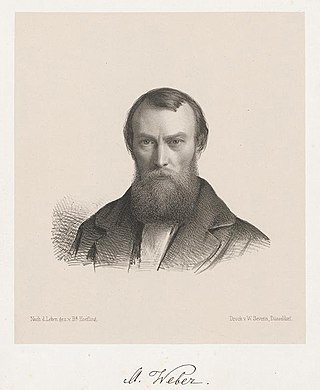
Johann Baptist Wilhelm August Weber was a German painter; associated with the Düsseldorfer Malerschule.

Adolph Friedrich Vollmer was a German landscape and marine painter and graphic artist. He and his contemporary, the painter Christian Morgenstern, were pioneers in Hamburg of early Realism in painting.

Christian Ernst Bernhard Morgenstern was a German landscape painter. Morgenstern is regarded as one of the pioneers in Germany of early Realism in painting. He gained this reputation in Hamburg 1826-1829 together with his contemporary Adolph Friedrich Vollmer while both were still studying; from 1830 onwards, Morgenstern, together with Friedrich Wasmann, Johan Christian Dahl and Adolph Menzel, introduced Munich to Realist painting.

Joseph Fay page 10 was a German painter and illustrator; associated with the Düsseldorfer Malerschule.
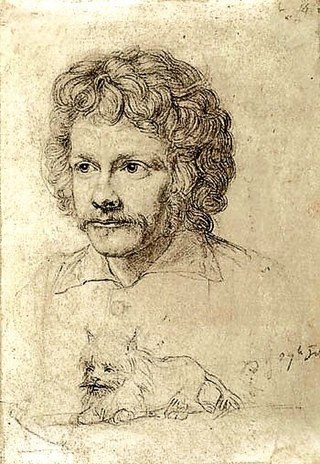
Carl Julius Milde was a German painter, curator and art restorer.
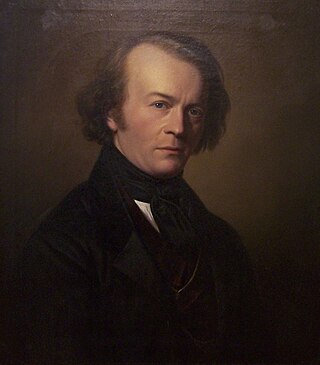
Ernst Ferdinand Oehme was a German Romantic painter and illustrator who specialized in moody landscapes with architectural elements.

Hermann Kauffmann also Herrmann Kauffmann was a German painter and lithographer, and one of the main representatives of the Hamburger Schule.

Hermann Baisch was a German painter and illustrator who specialized in landscapes and animals. He was one of the first artists in Germany to work in the French influenced "paysage intime" style.

Carl Friedrich Heinzmann was a German landscape and porcelain painter; also known as a lithographer.

Johann Günther Gensler was a German etcher, illustrator and painter; primarily of portraits. His known work consists of over 120 oil paintings and drawings.

Friedrich von Nerly, originally Christian Friedrich Nehrlich was a German painter in the Romantic Style; primarily known for his vedute of Venice. He is sometimes referred to as "The Elder", to distinguish him from his son, the painter Friedrich Paul Nerly. His first name is also seen as "Federico" and "Federigo".

Carl Gottfried Eybe (1813–1893) was a 19th-century German painter, lithographer and sculptor.
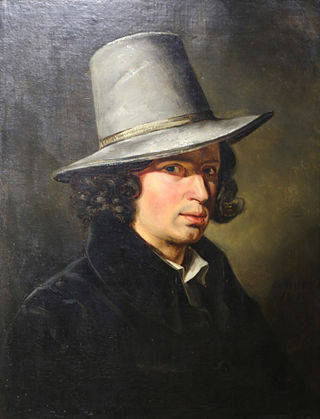
Simon Meister was a German painter.

Johannes Michael Speckter was a German lithographer and graphics collector.

Otto Speckter was a German etcher and illustrator.
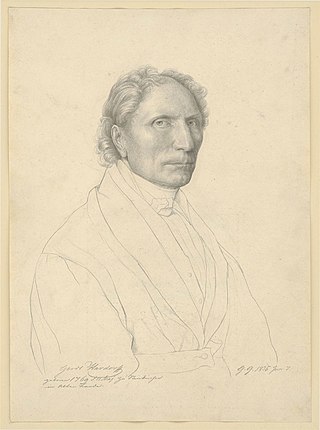
Gerdt Hardorff was a German painter, art collector and drawing teacher. He is sometimes referred to as The Elder to distinguish him from his son, Gerdt, who also became a painter.
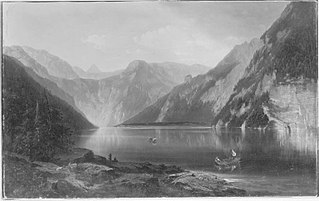
Carl Waagen was a German painter and lithographer.
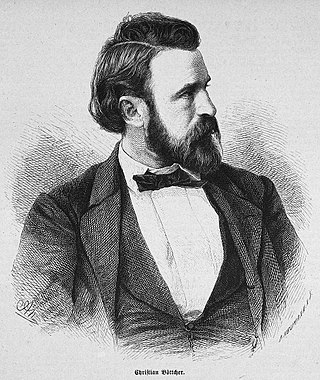
Christian Eduard Boettcher, or Böttcher, was a German painter whose work comprised portraiture and genre painting.